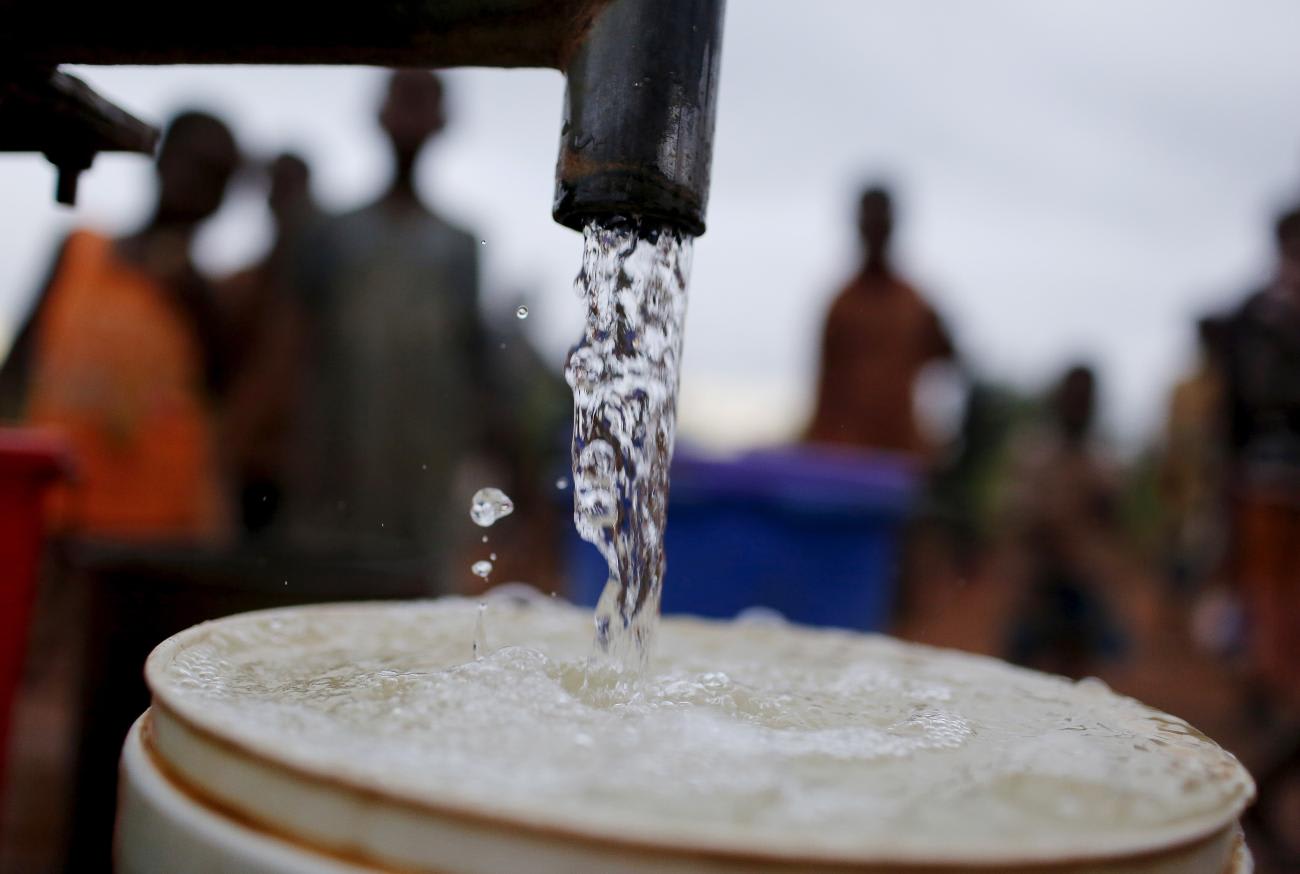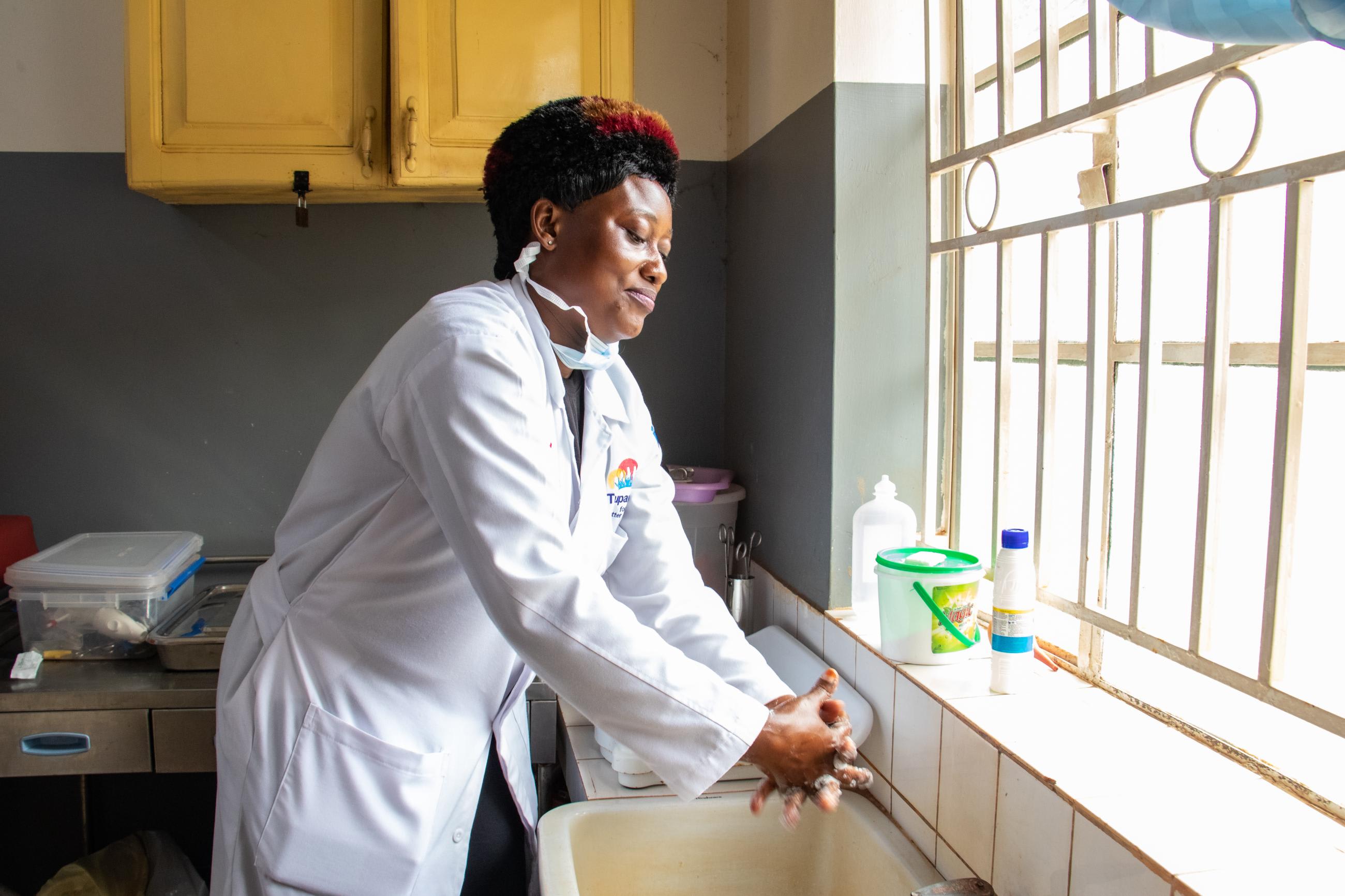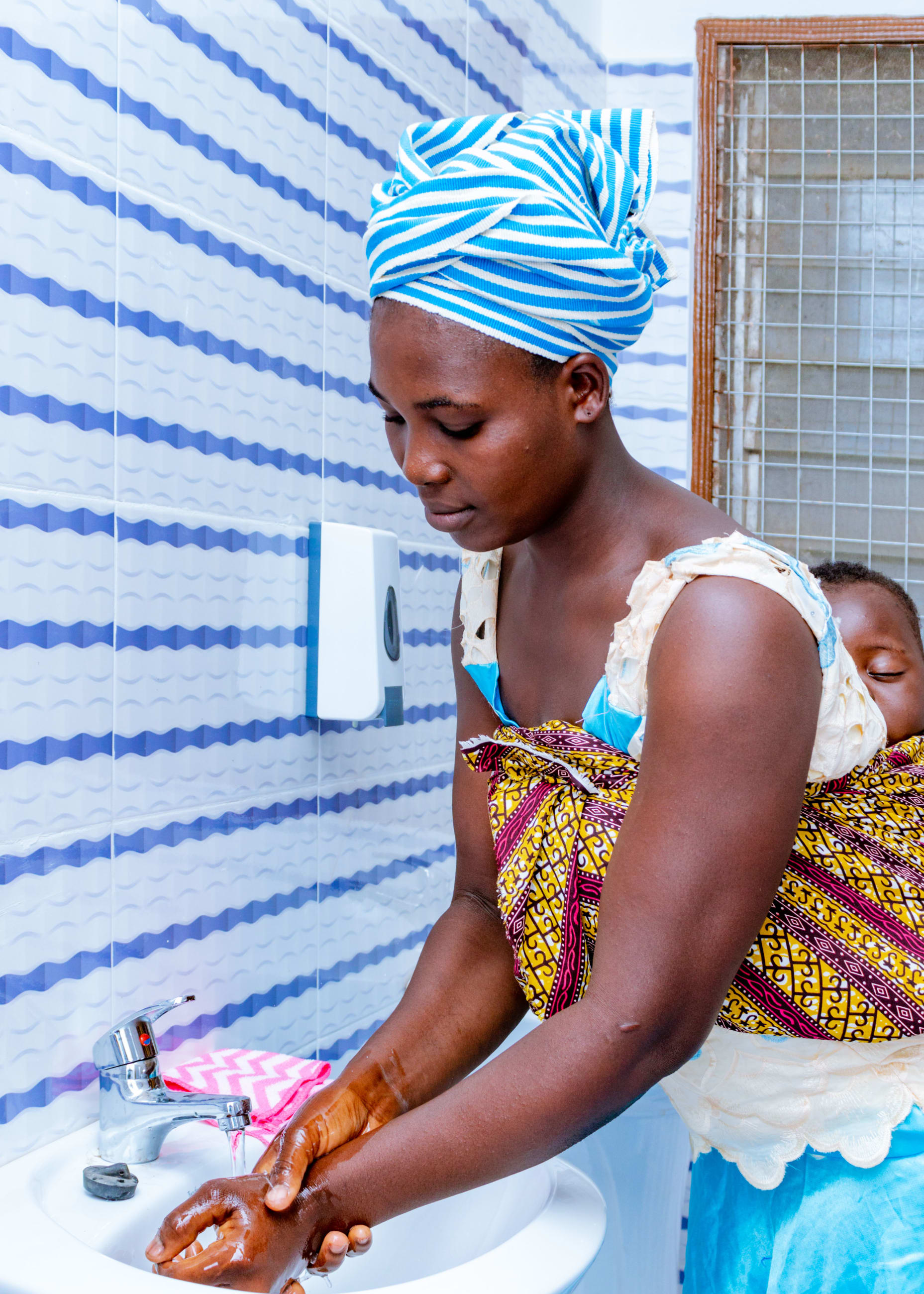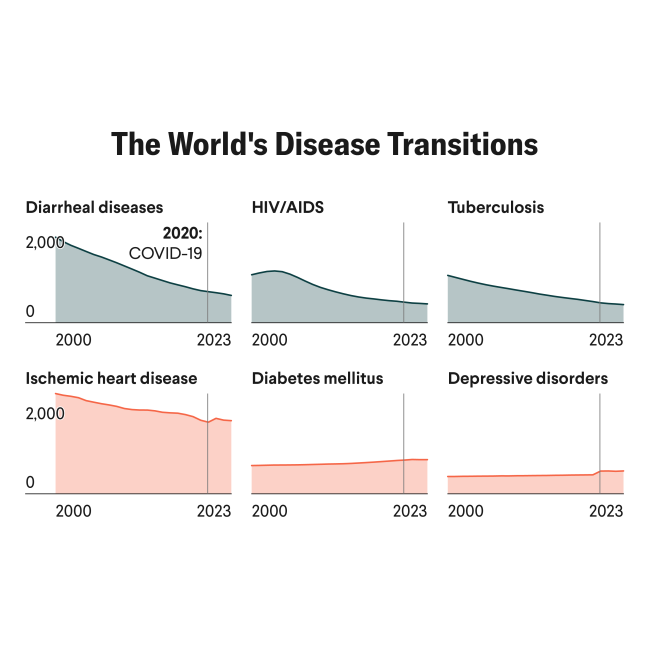When most people enter a U.S. health-care facility, whether it's a large hospital or a local doctor's office, they feel confident that there will be clean water and a bathroom, that medical and human waste will be safely disposed of, and that health-care providers will wash their hands between patients.
But that's not the case across much of the world. WaterAid America recently issued a compelling report that quantifies the staggering economic impact of a fundamental and solvable global health issue.
In the 46 least-developed countries, 50% of health-care facilities lack basic water services, 79% lack sanitation services, 68% lack basic hygiene services such as handwashing, and 66% lack basic waste management.
Think Global Health reached out to Kelly Parsons, CEO of WaterAid America, to learn what her organization's recent findings say about the human and economic impacts.
□ □ □ □ □ □ □ □ □ □ □ □ □ □ □
Think Global Health: WaterAid recently estimated the "staggering" costs of the lack of water, sanitation, and hygiene (WASH) in health-care facilities. How did that report come about and what were the key findings?
Parsons: For this study, WaterAid used World Bank methodology to focus on seven African countries where it operates—Ethiopia, Ghana, Malawi, Mali, Nigeria, Uganda, and Zambia—to better understand the measurable impact health-care-acquired infections have on people and their countries. The findings are truly staggering.
In these countries, more than 275,000 people died in 2022 alone because of an infection they picked up in the hospital. Then there is the financial burden. In the same year, infections acquired inside health-care facilities, such as sepsis and pneumonia, cost those countries a massive $8.4 billion. Now, consider that it would cost between $6.5-$9.6 billion to provide universal, basic WASH services in all health-care facilities across the 46 least developed countries, where WASH remains desperately needed.
WaterAid researchers also measured the impact of health care-acquired infections on GDP, and it is immense, ranging from 0.5% to 2.9% of GDP, and consuming on average 4.5% of national health budgets every year. In Malawi, for example, the impact is nearly 3% of GDP, double its total annual growth in 2023, and almost 11% of its annual health-care budget.
Most of this death and suffering is preventable.
It would cost between $6.5-$9.6 billion to provide universal, basic WASH services in all health-care facilities
WaterAid recognizes the role health-care facilities play in protecting billions of people when they are most vulnerable—during surgery, pregnancy, labor, and delivery, and, for newborns, in the first moments of their lives. Many health care-acquired infections are caused by contaminated hands, surfaces, or equipment. Implementing Infection Prevention and Control, or IPC, which includes proper handwashing, could prevent up to 70% of these infections. Health care-acquired infections are deeply personal tragedies and the reason WaterAid continues to advocate for clean water, decent toilets, and handwashing access in every facility in the world.
Think Global Health: What in this report surprised you most?
Parsons: The most tragic finding is, of course, the cost of lives. The most surprising is just how expensive preventable health care-acquired infections are. A minimal investment of less than $1 per capita annually will provide basic and sustainable WASH and waste management in those facilities. The economic costs of these infections exceed the investments to prevent them.
To anyone who has studied economics, this gap just doesn't make sense. Countries around the world are losing GDP to this solvable problem. Money is pouring in for vaccines, nutrition, or school programs, but without WASH, every one of those dollars is less effective.
Think Global Health: How does this report connect to some of the big global efforts under way to get WASH into health-care facilities?
Parsons: Last year, two cornerstone initiatives were announced that cement the importance of WASH in health care.
First, in the United States, the bipartisan Global WASH in Healthcare Facilities Act of 2023 was introduced in the current Congress. This landmark bill directs U.S. foreign assistance agencies to create plans and provide transparency around current work to increase access to sustainable WASH in health-care facilities.

Second, the UN General Assembly adopted a resolution calling for sustainable, climate-resilient health-care facilities by 2030, with a focus on safe and universal water, sanitation, hygiene, waste, and electricity services. This resolution was unanimously adopted at the highest levels and recognizes WASH in health-care facilities as paramount.
WaterAid's new report makes a strong financial case to local, regional, and national leaders that health-care systems must have effective infection prevention. It builds on the growing evidence that providing safe WASH in health-care facilities should be a priority investment.
Think Global Health: The overuse of antibiotics leads to antibiotic resistance, a growing global threat everywhere in lives and dollars. Clearly WASH plays a role. What's on the horizon in terms of curtailing antibiotic resistance?
Parsons: Without WASH, maternity wards and health centers become breeding grounds for infectious diseases that spread rapidly, which, in turn, leads to increased use of antibiotics. The upcoming high-level meeting on antimicrobial resistance (AMR) at the UN General Assembly in September is an opportunity for member states and advocates to make commitments to addressing AMR. Most of the focus will be on access to new drugs and surveillance tools—both of which take time and resources to develop. The conversation must consider how to reduce the need for antibiotics in the first place. WaterAid is advocating for increased attention on infection prevention and control that includes the first line of defense against AMR, which includes WASH.
Water is how climate change affects health
Think Global Health: Climate change is also about water—too much water and not enough. It feels as if we're looking into a water abyss. What does the health community need to understand about climate change?
Parsons: Water is how climate change affects health. Climate change affects not just the quantity of water, but the quality as well. If sanitation systems are not able to withstand floods, water systems could be exposed to human, medical, and other waste, leading to an increase in waterborne diseases, such as cholera. The individual health, water, and climate communities understand this, but we need to connect conversations and work together to bring about sustainable solutions that ensure healthy communities.
Think Global Health: How do you suggest the United States and donor countries better support health programs with a strong WASH component?
Donor countries must stop overlooking this fundamental investment. The role of WASH is critical to many sectors, but it is make or break for health. It's often assumed that health-care facilities have WASH, so investments in this critical infrastructure are not made. Infrastructure evokes thoughts of high costs, but that isn't necessarily true. Top global health priorities—pandemic prevention, preparedness and response, maternal and child mortality, antibiotic resistance, to name a few—require strong health systems and are impossible without WASH.













